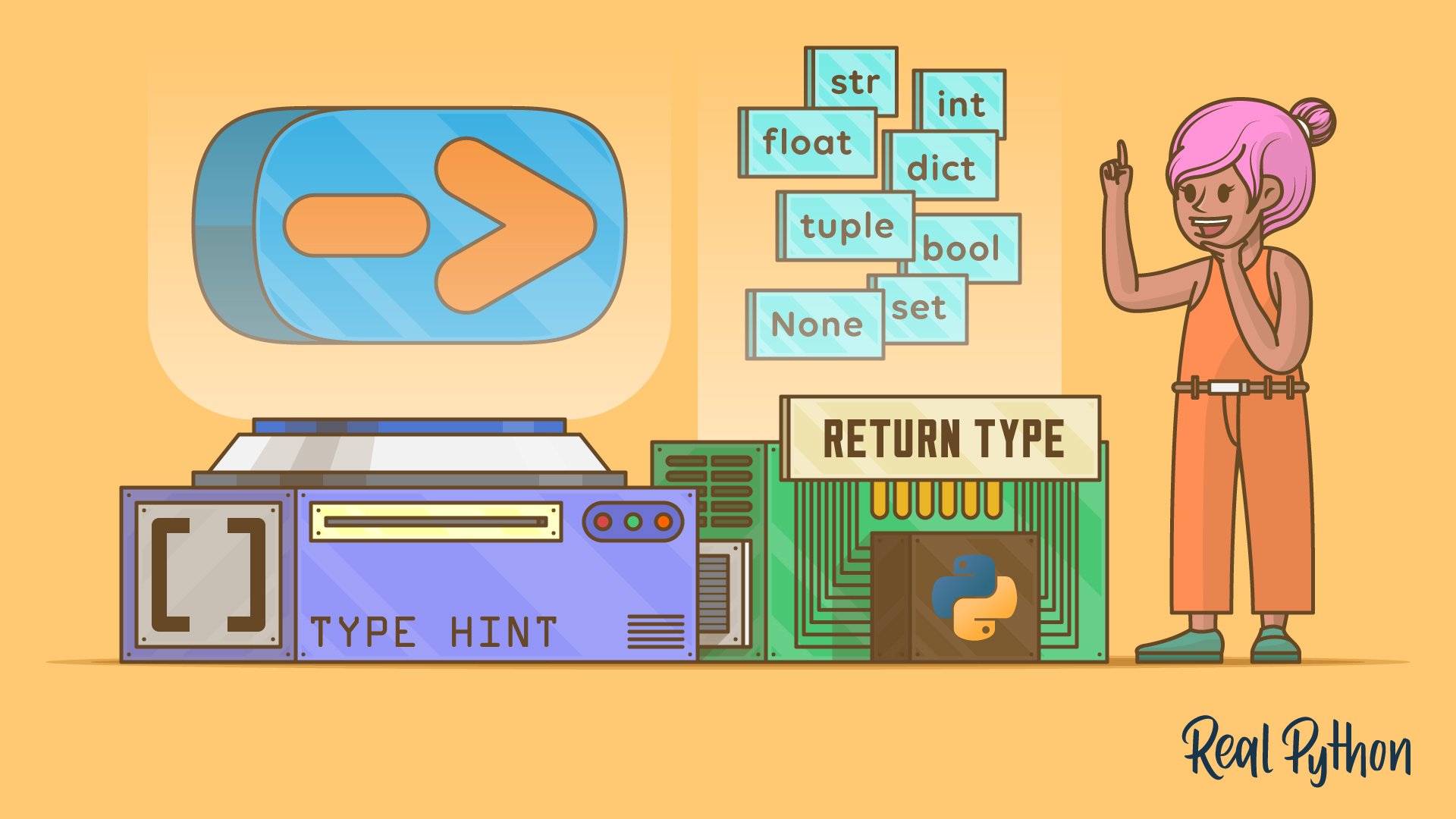
"In Python, the arrow symbol (->) appears in function definitions as a notation to indicate the expected return type. This notation is optional, but when you include it, you clarify what data type a function should return: You may have observed that not all Python code includes this particular syntax. What does the arrow notation mean? In this tutorial, you'll learn what it is, how to use it, and why its usage sometimes seems so inconsistent."
"In Python, every value stored in a variable has a type. Because Python is dynamically typed, variables themselves don't have fixed types-they can hold values of any type at different times. This means the same variable might store an integer at one moment and a string the next. In contrast, statically typed languages like C++ or Java require explicit type declarations, and variables are bound to a specific type throughout their lifetime."
"Dynamic typing also means you might not always know what data type a Python function will return, if it returns anything at all. Still, it's often useful to know the return type. To address this, Python 3.5 introduced optional type hints, which allow developers to specify return types. To add a type hint, you place a -> after a function's parameter list and write the expected return type before the colon."
Python is dynamically typed, so variables do not have fixed types and can hold values of different types at runtime. The same variable can contain an integer at one moment and a string the next. Statically typed languages such as C++ or Java require explicit type declarations and bind variables to a specific type. Python 3.5 added optional type hints to allow developers to indicate expected types. Placing -> after a function's parameter list and writing a type before the colon specifies a function's expected return type. Type hints are optional and can also be applied to function parameters.
Read at Realpython
Unable to calculate read time
Collection
[
|
...
]